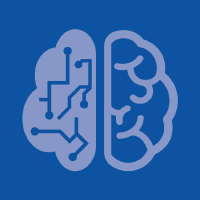Topic Menu
► Topic MenuTopic Editors


Machine and Deep Learning
Topic Information
Dear Colleagues,
Our society is facing a new era of automation, not only in industry but also in our daily lives. Computers are everywhere, and their employment is no longer relegated to just industry or work but also to entertainment and leisure. Computing and artificial intelligence are not simply scientific lab experiments for publishing papers in major journals and conferences but opportunities to make our lives better.
Among the different fields of artificial intelligence, machine learning is certainly one of the most studied in recent years. There has been a gigantic shift in the last few decades due to the birth of deep learning, which has opened unprecedented theoretic and application-based opportunities.
In this context, advances in machine and deep learning are discovered on a daily basis, but still much has to be learned. For instance, the functioning of deep learning architectures is still partially obscure and explaining it will foster new applications, algorithms and architectures. While deep learning is considered the hottest topic of artificial intelligence nowadays, still much interest is raised by “traditional” machine learning, especially in (but not limited to) new learning paradigms, extendibility to big/huge data applications, and optimization.
Even more diffused, then, are the (new) applications of machine and deep learning, to finance, healthcare, sustainability, climate science, neuroscience, to name a few. Continuing and improving the research in machine and deep learning will not only be a chance for new surprising discoveries, but also a way to contribute to our wellbeing and economical growth.
Prof. Dr. Andrea Prati
Dr. Luis Javier García Villalba
Prof. Dr. Vincent A. Cicirello
Topic Editors
Keywords
- machine learning
- deep learning
- natural language processing
- text mining
- active learning
- clustering
- regression
- data mining
- web mining
- online learning
- ranking in machine learning
- reinforcement learning
- transfer learning
- semi-supervised learning
- zero- and few-shot learning
- time series analysis
- unsupervised learning
- deep learning architectures
- generative models
- deep reinforcement learning
- learning theory (bandits, game theory, statistical learning theory, etc.)
- optimization (convex and non-convex optimization, matrix/tensor methods, sparsity, etc.)
- probabilistic methods (e.g., variational inference, causal inference, Gaussian processes)
- probabilistic inference (Bayesian methods, graphical models, Monte Carlo methods, etc.)
- evolution-based methods
- explanation-based learning
- multi-agent learning
- neuroscience and cognitive science (e.g., neural coding, brain–computer interfaces)
- trustworthy machine learning (accountability, causality, fairness, privacy, robustness, etc.)
- applications (e.g., speech processing, computational biology, computer vision, NLP)
Participating Journals
| Journal Name | Impact Factor | CiteScore | Launched Year | First Decision (median) | APC |
|---|---|---|---|---|---|

Applied Sciences
|
2.7 | 4.5 | 2011 | 16.9 Days | CHF 2400 |

Big Data and Cognitive Computing
|
3.7 | 4.9 | 2017 | 18.2 Days | CHF 1800 |

Mathematics
|
2.4 | 3.5 | 2013 | 16.9 Days | CHF 2600 |

Electronics
|
2.9 | 4.7 | 2012 | 15.6 Days | CHF 2400 |

Entropy
|
2.7 | 4.7 | 1999 | 20.8 Days | CHF 2600 |

MDPI Topics is cooperating with Preprints.org and has built a direct connection between MDPI journals and Preprints.org. Authors are encouraged to enjoy the benefits by posting a preprint at Preprints.org prior to publication:
- Immediately share your ideas ahead of publication and establish your research priority;
- Protect your idea from being stolen with this time-stamped preprint article;
- Enhance the exposure and impact of your research;
- Receive feedback from your peers in advance;
- Have it indexed in Web of Science (Preprint Citation Index), Google Scholar, Crossref, SHARE, PrePubMed, Scilit and Europe PMC.


